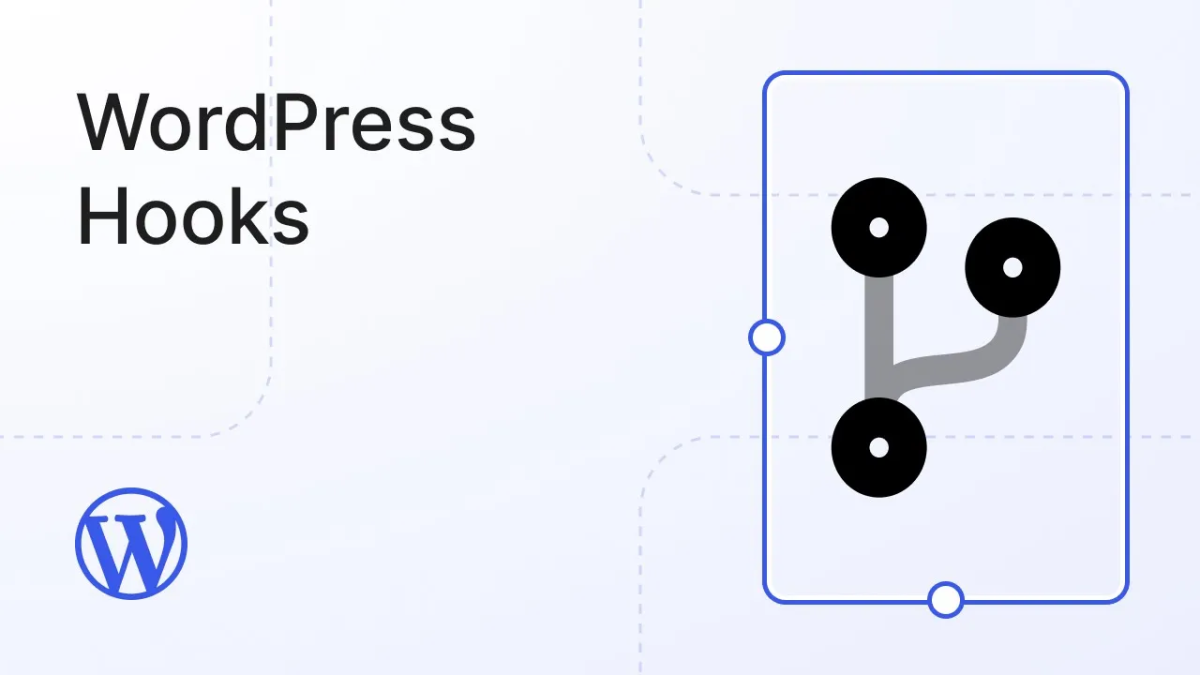
If you’ve ever wanted to customize your WordPress site without modifying the core code, hooks are your best friend. They are one of the most powerful features of WordPress, enabling developers to extend or modify the platform’s functionality safely and efficiently. In this guide, we’ll walk you through what WordPress hooks are, how they work, and how you can use them to enhance your website.
What Are WordPress Hooks?
In simple terms, hooks are points in the WordPress code where you can “hook in” your custom functions. They allow you to change or add functionality without editing WordPress core files.
There are two main types of hooks:
- Action Hooks – Let you add new functionality at specific points in WordPress (e.g., sending an email when a post is published).
- Filter Hooks – Let you modify data before it’s displayed or saved (e.g., changing post titles or content output).
How Action Hooks Work
An action hook triggers when WordPress reaches a certain point in execution. You can attach your custom function to that hook using the add_action() function.
Example:
function custom_footer_message() {
echo '<p>Thank you for visiting our website!</p>';
}
add_action('wp_footer', 'custom_footer_message');
In this example, we’ve added a message to the footer area using the wp_footer action hook.
How Filter Hooks Work
A filter hook modifies data and returns it back to WordPress. Filters are used with the add_filter() function.
Example:
function modify_post_title($title) {
return '🔥 ' . $title;
}
add_filter('the_title', 'modify_post_title');
This code prepends a fire emoji before every post title displayed on your site.
Commonly Used WordPress Hooks
Here are some popular hooks you’ll encounter in theme and plugin development:
Action Hooks
init– Runs after WordPress has loaded but before any headers are sent.wp_head– Adds content inside the<head>tag.wp_footer– Adds content before the closing</body>tag.save_post– Fires when a post is saved or updated.
Filter Hooks
the_content– Filters post content before it is displayed.the_title– Filters the post title.excerpt_length– Adjusts the length of post excerpts.login_message– Modifies the login page message.
Creating Your Own Hooks
You can even create custom hooks in your theme or plugin. This is useful when you want to allow other developers (or your future self) to extend your code.
Example:
do_action('my_custom_hook');
function run_custom_hook() {
echo 'Custom hook executed!';
}
add_action('my_custom_hook', 'run_custom_hook');
Best Practices for Using Hooks
- Never edit core files – Always use hooks in your theme’s
functions.phpfile or a custom plugin. - Use unique function names – Prevent conflicts with other themes or plugins.
- Prioritize hook execution – Use the third parameter in
add_action()oradd_filter()to control order. - Document your hooks – Makes collaboration and debugging easier.
Why Hooks Are Essential for WordPress Developers
Hooks make WordPress incredibly flexible. Whether you’re customizing your theme, building plugins, or adding dynamic behavior, hooks let you do so cleanly and safely. Mastering them means you can modify almost anything in WordPress without breaking updates or compatibility.
Final Thoughts
WordPress hooks are the backbone of custom development. They allow you to seamlessly connect your code to WordPress core actions and filters, making your site more dynamic, extensible, and future-proof.
If you’re just starting, experiment with small hooks in your theme and observe how they interact. Over time, you’ll gain the confidence to build powerful customizations and plugins—all thanks to the magic of hooks.
